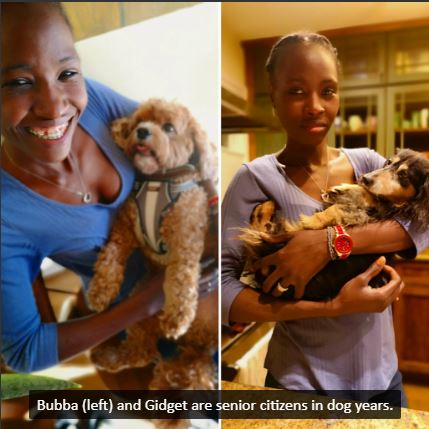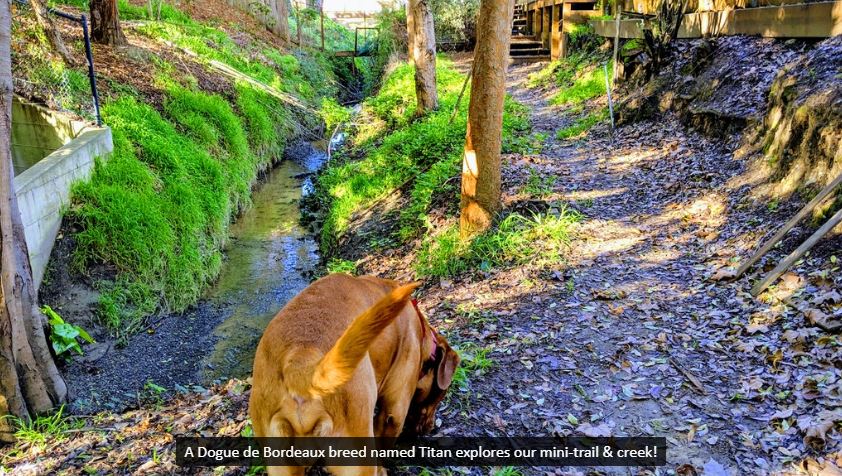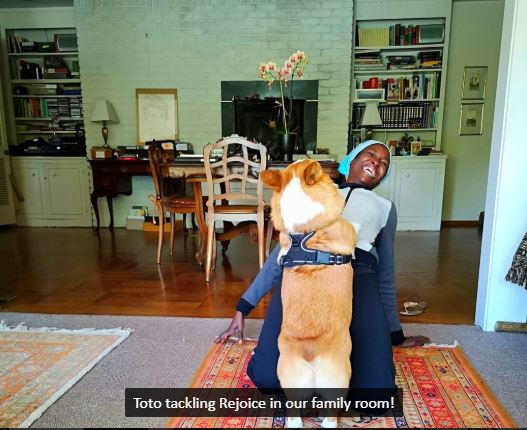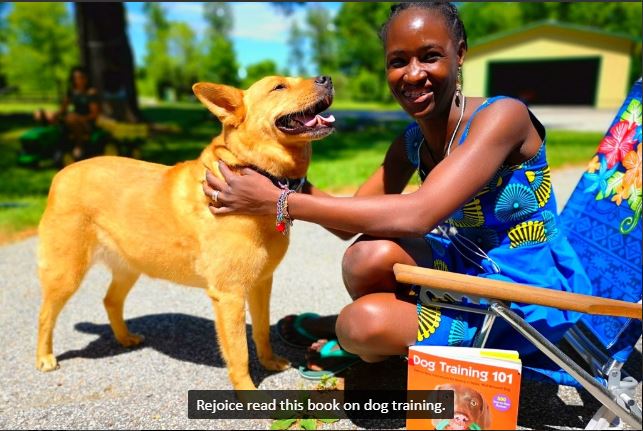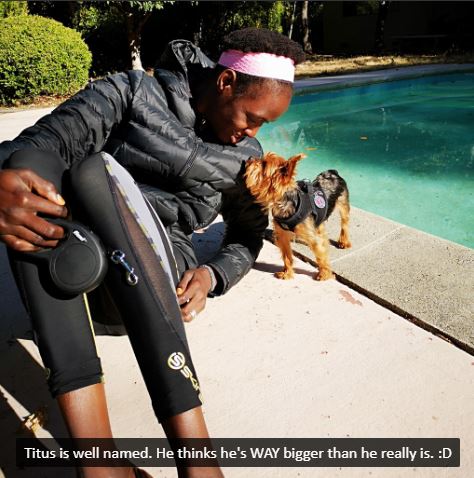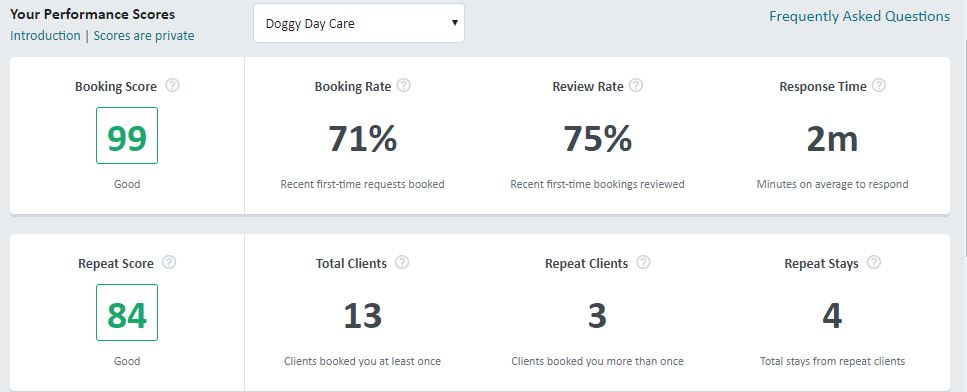Rover and Wag help pet owners find pet sitters to look after their pets. They are like the Airbnb for dogs.
Because I get plenty of business via my Rover profile, I don't use Wag. This article focuses on Rover, but Wag is similar, some of my tips apply to both websites. In another article, I explain why Rover is better than Wag.
I am guessing that 90% of the pets on Rover are dogs, 9% are cats, and 1% are other animals (e.g., rabbits, turtles, & fishes). Therefore, this article will focus on dogs, but most of it applies to cats and other animals too.
Before we get into 66 tips on making $60,000 on Rover, you must ask yourself:
Why are you interested in taking care of dogs?
Obviously, Rover sitters love furry pets. But some don't care about the money. For some sitters, pet care is just a fun hobby. They sign up because about once a month they love to play with a cute pup for a few days.
That's how we started. We also figured it would be nice to make an extra couple of hundred bucks per month while enjoying some canine company.
But suddenly our little hobby exploded into a real business.
This article is for Rover sitters who want to earn at least $1,000 per month and not the casual dog sitter.
At the same time, Rover will never make you rich. So don't jump into this business for the money.
Caring for animals can deliver a fair amount of hassle for a modest income:
- Dogs and cats will pee and poop in your home (one pissed and shit on me when I picked her up!)
- Some stink.
- Some will keep you up at night.
- Dogs with attachment issues may ruin your social life because they bark nonstop when left alone.
- A dog may bite you.
Like any job, you should do Rover because you love it. If you adore dogs, then you'll enjoy looking after them and the money will be a bonus.
Besides the money and the joy, there's another reason to be a Rover sitter: you can test out many types of dogs before getting your own dog.
For instance, if you really want a medium-sized dog, then you can specify that in your profile. You'll get to care for many medium-sized dogs and you'll learn a ton.
Many dog owners regret getting the dog they got, but are now stuck with him for 10+ years. Some dogs are great in theory, but not always in practice. Rover pays you to figure out what works for you.
Lastly, this funny 1-min video explains all the other reasons why dogs are like a feel-good pharmaceutical drug:
I have made $5,000 in a month on Rover. That's $60,000 per year. Here is how I do it. And how you can too.
Rover sitters can offer 5 types of services
Here are the services you can offer, from the most to the least expensive:
- Boarding: the dog stays overnight at the sitter's place.
- Daycare: the dog spends the day at the sitter's place.
- Housesitting: the sitter temporarily moves into the owner's home to take care of the animals.
- Dog walking: the sitter walks the dog for 30 minutes.
- Drop-in visit: the sitter enters the owner's house and spends 30 minutes with the animals (and might offer a quick potty break).
Ideally, you should offer all these services.
66 Tips on How To Make $60,000 a Year on Rover
1. Create a Rover profile.
That link gives you $20!
2. Come up with a catchy headline.
Say what makes you special. For example:
- Will you run the dog?
- Do you huge fenced backyard?
- Are you usually home 24/7?
- Are you also a professional dog trainer or vet?
3. Have a perfect profile photo, which means: a headshot of you with a cute dog.
It's amazing how many sitters don't have a dog next to them in their profile photo.
Exceptions: if it's an amazing photo, you could go with a full-body shot + dog OR a professional headshot without a dog. Those are just not ideal.
The first photo on this page is our Rover profile photo. It's imperfect because the Yorkshire Terrier in Rejoice's jacket is hard to see, especially on a smartphone or a thumbnail. Still, we love the photo (and the dog) so we're using it because, for those who see the Yorkie, they may chuckle.
4. Have an amazing cover photo.
Although the profile photo is the most important, the Rover cover photo is the second most important since it's the second thing that an owner will see.
Follow the same principle: you with a dog or two. Just make sure it's in a different setting than your profile photo (and a different dog).

This is our Rover cover photo, which is the 2nd photo that owners will see. Since a Yorkie (a toy dog named Titus) appears in our main profile photo, we wanted to contrast that with a giant dog whose name is Titan! This signals that we are open to all dog sizes.
5. Add at least 4 more fantastic photos to your profile.
Tips for those photos:
- Ideally, each photo should be with a different dog.
- Avoid indoor shots.
- Take photos outside with the dogs of your friends.
- Go to a dog park and take photos there.
- Focus on quality, not quantity (I have 44 great photos on my profile - and some are on this page).
6. If you own a dog, do NOT post more than two photos of him and you.
Why? Because:
- It will look like you're obsessed about YOUR dog.
- Owners want you to care about THEIR dog, not YOUR dog.
- If they see you worshipping your dog, they may worry that you will play favorites when both dogs are together.
- Demonstrate your love of dogs by having photos of you with many different types of dogs and not just your dog.
7. If you want to board or do daycare for dogs, post photos of dogs in your house and yard.
Owners want to see where their dog will stay and sleep.
8. Do NOT post photos of dogs if you or your home are not in the photo!
It's amazing how often sitters post mediocre photos of dogs with no context.
Owners aren't on Rover to look at doggy porn!
They want you to take their dog and have little interest in random dog photos so don't waste their time with dog photos that don't also feature you and/or your home.
Each photo must have a purpose. It's either to show YOU with a dog or YOUR HOUSE and a dog.
A dog by himself on the grass does not help convince an owner why they should pick you. You could have gotten that photo from anywhere.
Also, if the photo is a closeup of a dog so that you can't see that he's on your couch, that doesn't help either.
Quiz: Which of the 6 photos below should NOT be used on a Rover Sitter's profile?

Answer: The two middle ones.
9. Put CAPTIONS on all your photos!
The caption must be funny and/or informative.
Do not assume that people know what your living room looks like. Owners might think that you were house-sitting when you took that photo. Notice the caption on one of our profile photos:
The best photos feature three elements:
- You
- A dog (or two)
- Your house/yard/neighborhood.
If your photo does not have at least two of three of these elements, don't use it on Rover!
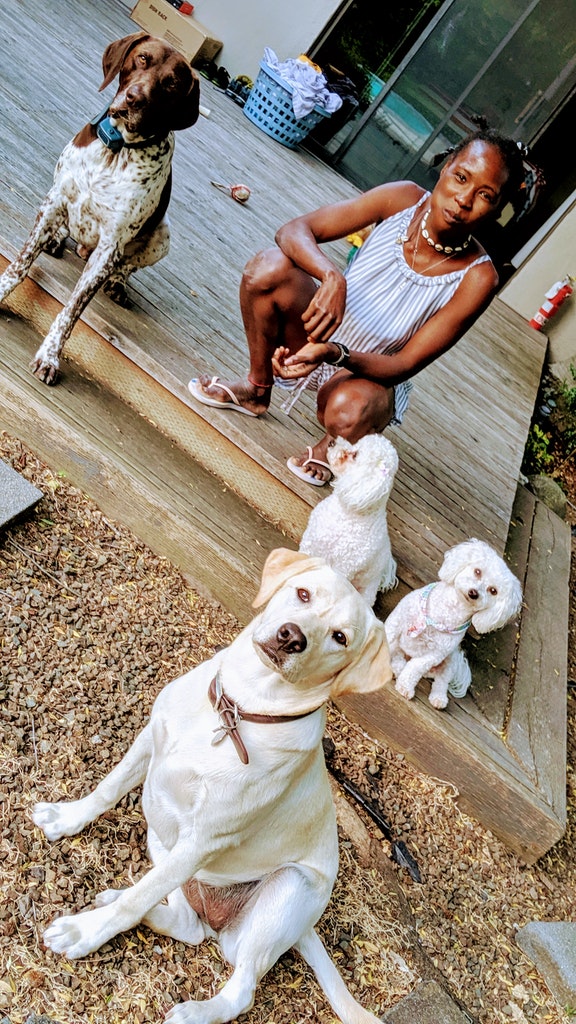
10. Even if you are willing to board 5+ dogs, don't show photos with 5+ dogs in it.
Why? Because:
- You'll look like you're running a kennel.
- Owners use Rover because they want an intimate, humane, and exclusive environment for their pet.
- Most dog owners support socialization with other dogs because it's healthy, but don't make it look like you live in a zoo.
11. Pass the background check.
It's free and takes less than one week to process. It gives you a checkmark icon with on your profile indicating that you're not a criminal.
12. Pass the Rover 101 Best Practices Exam.
Rover 101 is easy and free. You'll learn more about how Rover works and how to be a good pet sitter. And, best of all, you're have a graduation cap icon next to your name, which gives you instant credibility!
13. Learn how to perform CPR on a dog.
YouTube has many videos about performing CPR and other first aid techniques (like helping a choking dog). Below is my favorite dog CPR video, but you should watch a few others because vets disagree on the best technique:
After learning how to do CPR on a pet, you can check the box that you have been trained to do CPR. That will put the First-Aid icon by your profile name, thereby giving you even more credibility! (See all 3 icons nearby.)
14. Under "Years of Experience" include the years you grew up with a pet.
Rover is not asking you for years of professional sitting experience. In that case, it's zero, since you're just starting. Instead, put the years that you've had a pet in your home.
15. Write a compelling "About You" section.
What you write about depends on what services you're offering:
- If you're boarding or doing daycare, describe your home and neighborhood.
- If you're housesitting, provide evidence that you're not a thief (perhaps a stellar Couchsurfing profile). Emphasize that you will clean up well.
- If you're a dog walker, offer vigorous exercise (many owners LOVE making their energetic dogs tired).
If you're doing all these services, then address all those points.
16. Ask 3 friends for a testimonial.
A profile without reviews is like a sailboat without a sail.
Fortunately, when you're a newbie, Rover allows you to invite 3 people to write testimonials about you. Although those three reviews won't be tagged as a "Verified Review," most owners won't notice that detail.
If you can't get 3 references, your friends suck.
17. Be open to everything.
Rover lets you specify the size of the dog you're willing to look after when you're hosting and when you're traveling. Try to be open to all four categories (small, medium, large, and giant).
About 80% of sitters are women and many women dislike caring for big dogs because they can be hard to physically handle, especially if they're young and rambunctious.
As a result, only a minority of sitters accept large or giant dogs. Owners of such dogs are desperate for sitters.
Some sitters don't accept puppies or dogs that need medication.
When you're starting, try to have as few requirements as you can until you have at least 10 reviews.
18. Offer as many services as possible (ideally all 5 services).
An owner might need a dog walker today, but a dog boarder next month. If the owner works with you for one service, she'll probably pick you for a different service.
19. Offer the optional services of pick-up/drop-off and grooming/bathing.
If you're not keen on those services, charge a high price, but at least offer it.
20. Do competitive pricing analysis.
Search in your area code for all the services you plan to offer. I live near San Francisco and I have a big yard, so our prices are much higher than in most places. Learn your area's pricing norms.
21. When you're starting, set your prices at the low end of the pricing scale.
Ideally, be the cheapest one among the top 20 results.
22. End most prices with a 9 (e.g., $29, $39, $49).
Most sitters pick numbers that end with 5 or 0. Differentiate yourself.
23. Use holiday pricing.
Rover lets sitters charge more for holidays. Charge 20-100% more than your standard rate.
24. Make the additional dog cheaper for boarding or daycare.
Owners who have more than one dog love a discount. And it makes sense. Usually, dogs from the same owner will get along with each other, which means you don't have to watch them as carefully as dogs from different owners. That's less work and stress for you, so give them a discount.
25. Give a good discount for the additional dog on a dog walk.
The toughest thing about dog walking is getting to the owner's house. If it takes 15 minutes to get there, then it costs you 30 minutes of time plus transportation expenses for the roundtrip. Once you're there, it's not that much harder to walk two dogs than to walk one dog. So attract owners with multiple dogs.
26. Give a huge discount for the additional dog on a drop-in.
If an owner has 5 dogs, is it really 5 times more effort to drop in? Not even close. It's marginally more work. Charge $5 extra per dog.
27. Consider giving discounts for stays over 5 days.
Rover presents that option to you for both boarding and housesitting. We prefer housesitting, so we give a generous discount for housesits of over 5 days.
28. Set a low price for cat care.
Cats are easy, especially if they're indoor cats. Yes, there's the litter box mess and there's the risk that a frustrated/bored cat will destroy beloved items of yours, but cats are generally easier to take care of compared to a dog.
29. Be careful about boarding dogs and cats simultaneously.
The downside of allowing cats in your home is that you may not be able to board dogs at the same time since there's a risk of a fight. Since dogs deliver more money than cats, this can be a deal-breaker. If you can keep the cats and dogs separate, that's ideal. Most dog owners can't tell you how their dog gets along with cats since their dog has never seen a cat up close.
30. Optimize your pricing to match your preferences.
For example, we love housesitting. It feels like a vacation. So we charge a low amount.
Although we like to board, some dogs are destructive and mark your house even when the owners claim that they're "house-trained." So we charge much more for boarding.
I've seen other sitters do the opposite. They obviously dislike leaving their home, so they ask for $100/night to housesit and $50/night for boarding. Price to encourage what you want.
31. Set the number of spaces to 3 dogs.
Under service options, Rover asks you how many spaces do you have available each day for boarding, daycare, walks, and drop-ins. Assuming you don't live in a closet, set each one to 3. You can always adjust it later.
Three is a good number because it makes you fairly exclusive and intimate. If you can handle more, raise it once you get booked for 3.
It's a turnoff to see that someone can board 10 dogs in his apartment. In that case, most owners would rather take their dog to a dog hotel.
One Rover sitter set his max number of dogs to 99! However, buried in his profile, he explains that he rarely has more than 8 dogs simultaneously. He should set his max to 15 dogs. He may be losing clients who see his claim of a 99-dog capacity in a typical suburban-sized home as a dangerous and irresponsible.
32. Consider only accepting one dog at a time.
When owners search, they have the option to check a box that only shows sitters who accept one dog at a time. You can pitch yourself as a premium sitter by only hosting one dog at a time.
The downside of this strategy is that you may attract problem dogs (which is why the owners are looking for someone who only hosts one dog at a time). However, it could also be it's a fragile dog (like a Yorkie) and the owner doesn't want to risk it getting crushed by a Rottweiler.
The upside is that you could charge a lot for that one dog. This is a great strategy if you have a small apartment.
33. Confirm your availability every day.
If you want to appear in the top 10 search results, you MUST confirm your availability several times per week. Rover can message you regularly to remind you to confirm your availability.
34. But don't just blindly confirm your availability.
Verify that you're truly available. Some sitters get into the habit of confirming often, but then forget that they booked a ski trip for next weekend. When an owner requests that weekend, you decline, and the owner gets pissed at you and Rover because Rover said that you were available. Rover penalizes you by lowering your position in future search results. Keep your calendar up to date and confirm your availability daily.
35. Say yes to everyone.
Rover tracks how often you decline requests. If you do it often, they will kick you down on the search results.
Therefore, even when it's a dog that doesn't excite you or it's on a weekend you were planning to go to Las Vegas, do your best to say yes to everyone, especially when you're a newbie.
Rover doesn't want owners to get rejected multiple times, so they put the "yes-men" at the top of the results.
36. Answer every request in minutes!
If you're busy when the request comes in, tell the owner that you're busy and that you'll get back to them in X minutes.
This is so important because Rover measures how long it takes you to reply to new requests and then puts that statistic on your profile.
If you're an owner, who would you rather work with:
(a) the sitter who replies in 6 hours?
(b) the sitter who replies in 6 minutes?
Would you rather write to a sitter who replies 70% of the time or 100% of the time?
Rover will credit you with a fast response even if you say "I will respond later." In Rover's book, that's a response.
37. Set your Rover smartphone notifications on.
Unfortunately, Rover doesn't let you assign a special notification sound tone, but they can send you an SMS when you get a new request. Go to your app's settings, notifications, and turn on the SMS when you get "new inquiries." That way you can react quickly.
38. Enable "Quiet Hours."
This is a clever trick to help you keep an impressive response rate. Under Settings, Rover allows you to set the hours you prefer them to hold the delivery of your messages.
For example, let's say you set the quiet hours from 22:00 to 8:00 and an owner messages you at 23:30. When you wake up at 8:00, you'll see the message has been unanswered for over 8 hours. This will destroy your average response rate.
By setting Quiet Hours, Rover will hold messages that come in the middle of the night and deliver them whenever your Quiet Hours end. By 8:05, you will have replied to all your messages "in minutes" and keep a fast response rate.
39. If, after a day of having made an inquiry, the owner doesn't book you or schedule a meet-and-greet, then archive the request.
This is so important! That's because when an owner makes an inquiry, Rover blocks out your calendar for the dates the owner requests.
Let's say you can only board one dog per night. On June 1, an owner asks if you can board his pet for June 20-30. Two minutes later, you say, "Yes." The owner never responds after that. This happens often because owners make multiple requests and pick their favorite, but they often don't let you know that they found another sitter.
Meanwhile, for the next 19 days, you won't turn up in the search results when owners look for someone to board their dog on any day during June 20-30. So you'll miss out on money-making opportunities because you didn't archive the request.
Therefore, unless the owner schedules a meet-and-greet, archive the request within 24 hours of getting it.
40. Sometimes archive it in less than two hours.
If the owner doesn't personalize her inquiry by mentioning your name or something unique about you, that usually indicates that she's contacting many sitters simultaneously.
Respond to her in minutes and then archive her request if she doesn't get back to you in 1-2 hours.
41. There's no downside in archiving a request quickly.
The owner won't know you archived her request.
In the previous example, let's say that on June 10 that owner says, "Hey, I'm bringing my pooch over in 10 days, OK?"
Assuming you still have availability, you still can book her easily.
But if you are no longer available, you tell the owner that next time she shouldn't have let 10 days pass before booking.
42. Be professional at the meet-and-greet.
If the owner is coming to your house, clean it up! Hygiene is paramount for owners!
If you're going to their house, don't dress like a slob. Be professional.
43. Be punctual!
If you're running late, tell the owner ASAP. Communication and reliability is everything!
44. If you're hosting a dog when the owner comes with her dog, then meet them with your dog(s) out on the street first.
Dogs can be territorial. So introduce them in a neutral zone. Explain this to the owner and they will respect your knowledge and sensitivity.
45. Let the owner book you.
Don't book yourself. With Rover, either party can initiate a booking. But no booking is official until both parties have agreed.
Therefore, never send out a booking request unless the owner asks you to do so or tells you that she wants to book.
Why? For the same reason that you should archive pending requests: when you send out a booking request, the owner has 3 days to respond and those dates get blocked out of your calendar.
Many owners will ignore your booking request because they're too embarrassed (or lazy) to tell you that they found someone else. They don't realize that they're blocking your ability to get other requests for those dates until the booking request expires.
Even after those 3 days expire, the owner's request will still be in your pending, which means you're still blocked for those dates. Archive it ASAP!
46. Know the one instance when you should book yourself.
Rover novices sometimes misunderstand how booking works. They might think that it's good enough to just tell you that they will bring their dog to you.
It's not. They must pay upfront. That requires booking.
So if an owner says, "OK, see you on the 20th!" and they haven't booked, gently remind them that they need to book you. That's when you can book it yourself and all they have to do is click on ACCEPT.
You can also do it with a regular dog walk.
47. Have a smart refund strategy.
Rover has 3 cancellation policy options. When you're starting, you should have a Flexible refund policy, which gives owners peace of mind when dealing with a newbie like you.
Once you have over 10 reviews, you might want to implement a Moderate or even a Strict cancellation policy.
Nobody likes strict cancellation policies, so be careful about using it. We use the Strict policy on Boarding requests because we get many requests. We ask for more than $119/night and have a strict policy to slow down the demand.
48. During the stay, send at least one photo with a written update every day.
I often send 5-10 photos per day. Occasionally, I send a video. Owners love it!
It's depressing when a Rover sitter's profile says that only "70% of clients received photo updates."
WTF?! Dog owners leave their precious dog with you and you can't even send them one stinking photo?!
Do this: moments after you get their dog, send the owner a photo telling her that all is well. That way, even if you forget to send a photo update later, you'll keep your photo update rating at 100%. Ideally, send multiple photos per day because that will earn you a 5-star review!
When boarding, send a photo before bedtime because every owner sleeps better knowing at all is well with their pup.
49. Improve your photographic skills.
Nothing delights owners more than a memorable photo of their dog:
- Play with perspective.
- Action shots are fabulous.
- Increase the color saturation to make the colors pop.
I hope the photos on this page and our Rover profile give you ideas.
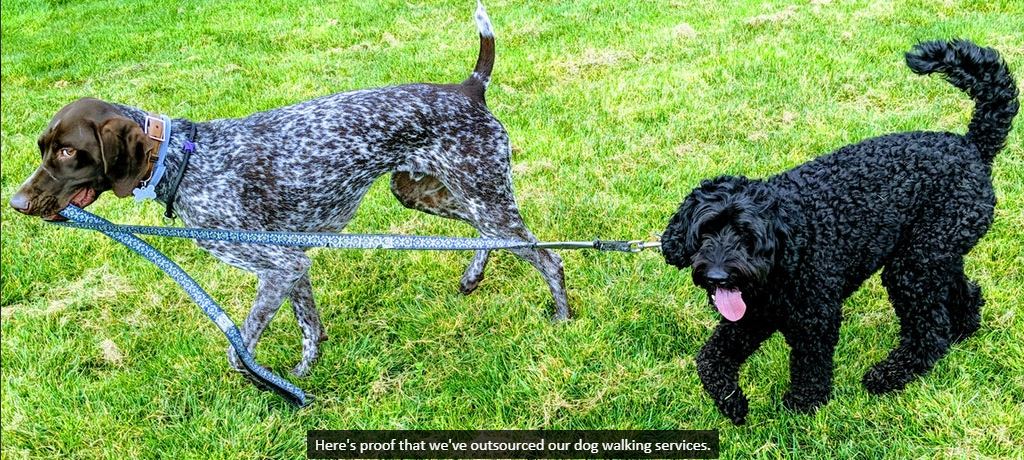
Near the bottom of my 44 profile photos, I put this photo even though it violated my rules of having you and/or your house in the photo. It's just because it's a fun photo that I took and it has a funny caption.
50. Only make your best photos public.
When you send a photo to an owner, Rover has a checkbox that says "Make the photos public." Only make them public when you're in the photo or it's a great photo. I only make about 20% of my photos public. Why?
Because your public photos will appear on your profile. Let's say you've posted 10 photos on your sitter profile. All your the public photos that you sent to owners will follow your 10 photos, with the most recent public photo appearing first.
Public photos won't have captions, so make sure they're good all on their own. Favor photos that where you appear or are just brilliant.
51. Don't send photos of the dog's shit.
One sitter publicly posted photos of a dog's poop (I suppose to prove to the owner that her dog took a dump). Even if the photo were private, the owner doesn't want to see shit. It's unattractive. The only exception is if it's a weird color or if the dog has diarrhea.
If you want to inform the owner that her dog has taken a dump, just write it or (if you're using the dog walk feature) check the "Poop" box.
52. Offer huge discounts if the owner lets you bring another dog in their home.
Housesitting is an inefficient way to make money. Why? Because you:
- Can only housesit in one house at a time (whereas daycare/boarding allows you to charge multiple customers simultaneously).
- Can't offer daycare or boarding (the two most lucrative services) while housesitting.
If we assume that you charge $50/night for housesitting, you can only make more money via drop-ins and dog walks, neither of which bring in much money.
If you're lucky, you'll find an owner who doesn't mind if you bring one or even two dogs while staying in their house. Obviously, they only want well-behaved dogs so be careful what dog you invite. Some owners like the idea of giving their dog(s) a companion.
To thank the owner for her flexibility, offer a steep discount off your normal housesitting fee. If you normally charge $50/night, you can give the owner half off. You'll be able to charge at least $50/dog for boarding, thereby netting you $75/day.
Besides telling the owner, you'll want to tell the owners who are booking you for daycare or boarding since they may have picked you because they like your home.
Of course, many sitters offer house-sitting not for the money but simply to get away from their annoying roommates.
53. If you're housesitting, leave the place cleaner than you found it.
This is huge! My wife is a clean freak so she always cleans meticulously.
I think many housesitters book us again simply because they feel like they're getting a free cleaning service along with the housesit! One regular customer gives us $100-200 tip each time to show their gratitude.
54. When housesitting, don't eat from their food unless they invite you to.
If it will be spoiled or expired by the time they return, then it's fair game. Condiments are also fair game as long as you don't use them excessively. If you want to play it safe, don't touch their food at all.
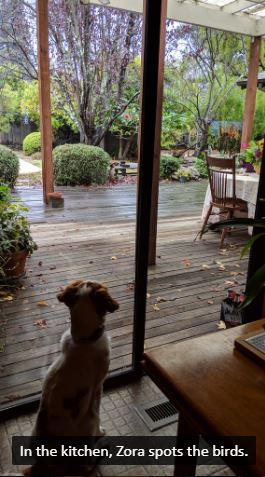 55. After you've provided a service, beg the owner for a review.
55. After you've provided a service, beg the owner for a review.
This is especially important when you have fewer than 10 reviews. You may have to remind them twice, but don't remind them more than 3 times.
56. When an owner books you multiple times, beg them to review you each time!
To make it easy for them, tell the owners that they don't need to write a review since they already wrote one. Instead, just ask them to give you 5 stars again for your latest service. That will count to your total number of reviews!
Let's say one owner books you 10 separate times. That one owner can give you 10 five-star reviews!
So stuff the ballot boxes! Woo-hoo!
After they review you, thank them. Your gratitude will encourage them to review you again when they request your service in the future.
57. Do not publicly reply to positive reviews.
Rover lets you publicly reply whenever an owner leaves you a review. Use this feature only if the owner criticizes your service. If you have a legitimate defense, say it politely. Or publicly apologize for your mistake.
However, if owners rave about how amazing you are, there's no need to publicly thank them. Just thank them in a private message.
Why? Reviews are mainly for your prospective customers. Don't distract your prospects with verbose "thank yous" to your previous clients. Just let your prospects read a dozen positive reviews in a row without distractions.
58. After you have 10 reviews, become picky.
You may want to:
- Raise your prices.
- Deselect dog sizes you dislike.
- Diminish your service radius.
59. Don't bypass Rover.
It's tempting to cut out the middleman, especially since Rover takes 20% of what the customer pays.
There are two reasons you shouldn't make a habit of cutting Rover out of your deals:
- Rover provides insurance for you, the owner, and the dog. I had to use it once when I dropped a Yorkie (he had a concussion and had to go to the vet - it cost $600 - and Rover paid half and the owner paid the other half). If the dog shreds your couch to pieces, Rover will help pay for the damages.
- Rover tracks the percentage of customers who end up booking with you after they contact you and the percentage of repeat customers. If you're bypassing Rover often, their algorithm will notice it and will push you down on the search.
Unless that prospective customer books with another Rover sitter, Rover can't be sure why that prospect didn't book (or re-book) with you. Rover figures either:
(a) You didn't impress the prospect enough and the prospect took her business elsewhere.
(b) The prospect gave you the business, but you cut Rover out of the deal.
Either answer is bad news, which is why Rover penalizes you when you don't close deals or fail to get repeat business.
If you must bypass Rover, offer the prospect to split the 20% difference (the customer gets 10% off and you make 10% more).
60. Use pricing to manage your demand.
If you live in a dense area, you will get overwhelmed with requests, especially if you offer attractive pricing and accumulate rave reviews.
There are many unwise ways to diminish the demand. Some sitters try to slow down demand by making themselves unavailable on their Rover calendar. This is foolish. Only use this feature when you're out of town.
Another strategy is to tell owners you can't service them this time. Bad idea. Remember, Rover loves yes-men.
Another strategy is to use a Rover feature that says that you are only open to repeat customers, not new ones. That's sub-optimal.
If you're saying no because you're tired of large dogs, then take large dogs off your list.
If you need a break, jack up your prices.
Ask yourself: how much would I have to get to earn to make me willing to accept this dog? We all have a price where we will accept almost any dog. If someone pays you $150/night, would you do it? If yes, charge that, unless you're willing to do it for $129/night.
The point is: if you want to slow down the torrent of requests, there's only one good strategy: raise your prices. You can always lower them later or offer discounts to the dogs you love.
61. After 50 reviews, get even pickier.
Keep raising your prices until you notice a significant drop in bookings. Now you've found the sweet spot. Lower your prices 30% from your high point (when requests stopped coming for 2-4 weeks).
Example: at $100/night you stopped getting requests for a month. Charge $70.
If you want more volume, charge 50% off of your high price point.
After 50 reviews, you might want to tighten your cancellation policy too.
62. Give discounts to your favorite dogs.
If you serviced easy-going dogs, give them a discount. If you love toy dogs, give them a discount when the customer inquiry comes in.
Unfortunately, Rover doesn't let you set different price levels for the size of dogs.
Therefore, you either have to eliminate them a size category as an option or give discounts when you get the size or breed of dog you prefer.
There are multiple ways to give a discount. Click on "Edit" next to the pricing and then adjust any of the numbers. It's best to adjust the numbers before they book so that Rover doesn't have to refund the customer after they pay.
63. Lock-in the price for your regular customers.
This is important to do as you raise your prices. Most owners didn't mind when we raised our boarding price from $79 to $89, but once we jumped to $129, that was a bit much. We didn't mind losing high-maintenance dogs, but easy-going dogs deserve a lock-in. Rover makes that easy to do.
64. Rover doesn't let you blacklist breeds, only sizes.
If you can't accept Pitbulls and German Shorthair Pointers, say so in your "About Me" description, but don't get frustrated when some people don't read it.
65. Review your performance scores every few months.
Rover tells you how good you are on two metrics on a 1-100 scale: the booking score and the repeat score.
The booking score measures how many owners reach out to you for the first time and end up leaving you a 5-star review.
The repeat score measure how your customers book you again. The higher your score, the higher you'll turn up on the search results.
Response time is also important.
Use the pull-down menu to see how you're doing on any of the services you're offering. Each gets a separate score.
If you score high, Rover will keep putting you at the top of the search results. When you're #1 on the search results and you have 30+ five-star reviews, many owners will be willing to pay a premium so that their furry animal is safe, healthy, and happy.
66. Don't take a vacation when everyone else does.
You can double your daily income during the holidays. Many pet owners dislike pet hotels, which are often full during the holidays. Meanwhile, many Rover sitters take their own vacation.
Therefore, supply dries up and demand soars.
Charge what the market can bear. And it can bear a lot during the holidays.
The downside is that you may get dogs with serious separation anxiety issues. As a result, you may find it hard to leave your home for a couple of hours to enjoy a holiday gathering.
3 bonus tips that I know nothing about
Here are other ideas that may work for you, but I have no experience in them, so I can't say much about them.
1. Consider Rover Go
Rover Go is a turnkey solution that Rover gives to new sitters who are serious about launching a pet care business.
Although it's free, the catch is that Rover takes 25% of your earnings instead of the standard 20%.
Rover Go is probably worth it if you're either:
- Starting from scratch and you want a serious boost to help you take off.
- Already on Rover and your business is sluggish.
If you're not ready to go all-in, then you can skip Rover Go. I never used it and I don't see the point of using it now since everything is splendid.
2. Advertise your pet care services on Craiglist
Rover makes it easy. Just go to your Dashboard and click on "Post on Craiglist."
I get so many inquiries via Rover that I do not need to do any promotion on Craiglist, but you may need a boost.
3. Promote on NextDoor and other locally-focused apps
It's the same idea as Craiglist.
6 Lessons learned
After about 130 five-star reviews on Rover, I have learned quite a bit about dogs.
1. Many owners don't train their dogs to come on command.
If you can only teach your dog one command, it should be "come."
Still, it's stunning that a third of owners don't manage to train their dogs to reliably come when called. WTF!
2. Dogs aren't as loyal as you think.
It's remarkable how quickly many dogs change their loyalty. Dogs worship whoever feeds and walks them. I've had dogs follow me out of their apartments even when the owner is standing right there! (It must be embarrassing for the owner!)
3. Dogs behave differently when they're away from their home.
I've housesat one dog and walked another. Both seemed like normal, calm dogs. However, when I boarded them (separately) in my house, they became neurotic. In their house, they're calm. In my house (which is bigger than their house), they follow me everywhere and are constantly nervous. Their appetite plummets. It's hard to know this during a meet-and-greet with the owner. So be prepared for a transformation.
You're probably not the same person when you're in Tibet as when you're in your hometown.
4. Owners assure me that their dog is "housetrained," but within minutes of arriving at my house, they pee or shit in it.
Obviously, they're marking the new territory, but it's just another example of how dogs morph when their home changes. That's yet another reason why I prefer housesitting over boarding.
5. Some owners don't know their dog well.
I've had owners tell me that their dog wants a neat bed, has to drink from his favorite bowl, won't eat wet food, gets along with other dogs, hates cats, dislikes running, and many other things that I quickly disprove.
Owners sometimes impose their idiosyncrasies on their dogs. They think that their dog cares about the same shit they care about.
6. Women are better than men at picking dogs.
Whenever we get a tough dog to handle, it's usually a man's fault. It's often some dude who falls in love with how a breed looks (usually an enormous macho monster) or refuses to neuter the dog ("because I wouldn't want anyone to chop my balls off!").
It's the man who picks the hyper-energetic dogs or aggressive dogs.
What's sad is that I rarely meet the man. It's the woman who brings the troublesome dog to our house and tells me the story of how they acquired the dog.
So the man picks the dog and the woman ends up having to care for it. She is often physically overpowered by the hyperactive, strong dog.
So men, if you're reading this, please let the lady pick the dog.
3 Downsides
The gist of my Rover strategy is to maximize your revenue and to encourage you to raise your prices as you gain 5-star reviews.
There are three downsides to this strategy.
1. High prices attract difficult dogs
We sometimes get the dogs that nobody wants:
- Ultra-high energy dogs.
- Destructive dogs.
- Dogs with extreme separation anxiety (you can't leave them alone for 5 seconds or they bark and scratch doors wildly).
- Aggressive dogs.
- Dogs that aren't housetrained.
- Dogs that bark excessively.
- Dogs in heat or not neutered/spayed.
- Disobedient dogs.
These are stressful and exhausting dogs. They can scratch your floors or furniture, but not so badly that it's worth paying the deductible on your Rover insurance.
At the end of the day, you conclude that $100/night was a bargain considering all the work and stress that the dog gave you.
Fortunately, no stay is forever.
Unfortunately, Rover doesn't allow you to make yourself unavailable to a certain owner/dog. So that same owner will probably contact you again, especially if you gave her a 5-star service. Next time she requests you, politely say why you never want to take care of her dog again. She'll understand since she has to live with her crazy dog. If you just decline her each time she requests, she may not get the message and each decline negatively impacts your Rover performance scores. So just be candid.
As I mentioned, when you get dogs you love or who do well in the meet-and-greet, offer a major discount. I've given 50% off to some clients. They will keep coming back to you.
2. Rover can ruin your social life
Perhaps half of the dogs we get have separation anxiety. They bark nonstop when left alone. Even if they're not destructive, it breaks my heart to see a whimpering dog. So I stay at home. Or take the dog with me as I run errands.
When you're invited to a dinner party at last second, you can't go because you can't bring the dog(s) along.
At last second, the mayor of my town invited my wife and me to stay in a cabin in Yosemite for a few days around the 4th of July. We had decline because we had committed to board and housesit during that holiday. So we missed out on a fun experience. If you like spontaneity in your social life, be prepared to lose it if you get deeply involved with Rover.
3. Learning of a dog's death
About every 4 months, a dog that I took care of dies. Scooby, Gia, Rascal, and Gidget all died about two weeks after I last saw them. They were all old. Although death is inevitable, it's still sad when a dog you adore dies. Be grateful that you knew the dog.
Promo codes!
If you're an owner and you want $20 off your first Rover booking, use this code:
Promo Code: REJOIT86531
The promo code is only for new Rover members.
Congrats on reading this far!
Now become a Rover sitter and get $20!
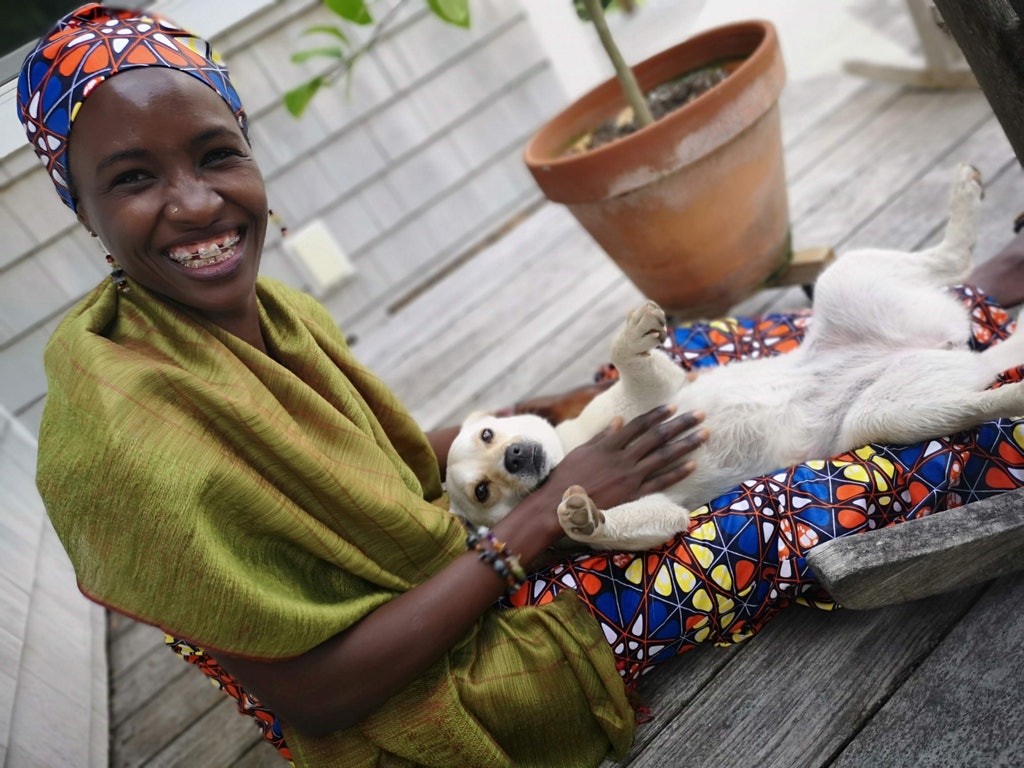
How to make over $100,000 per year on Rover
If you follow my tips, you can make $60,000 a year on Rover.
Furthermore, you can make over $100,000 per year if you:
- Live in near an expensive city.
- Optimize your pricing.
- Offer all 5 services.
- Handle 5+ dogs per day.
Here's one way you could do it:
Boarding 2 dogs @ $75 x 365 = $54,750
Daycare 2 dogs @ $40 x 365 = $29,200
Walking/Drop-in for 2 dogs @ $25 x 365 = $18,250
Total = $102,200
There are a few caveats to consider:
- To average 2 dogs per night, you'll need to have 5-6 during the holidays/weekends to make up for the days you have 0-1.
- This assumes you are available 365 days a year, which is intense.
- The listed values are what you get after Rover takes its 20%; therefore, to make $25/walk, you have to charge $30/walk.
Obviously, you can tweak these numbers.
For instance, I know one guy in San Francisco who walks 6 dogs in the morning and 6 dogs in the afternoon. He charges $25/dog. Assuming he does this 365 days a year, he's making $109,500/year from dog walking alone! If he offers daycare and/or boarding, he could make $150,000-200,000 per year, which is above the poverty line in San Francisco.
Final thoughts
My tips are not gospel. Do what works for you. Hike Your Own Hike.
What's key is that you work for Rover because you love taking care of animals. If you're doing it for the income, you'll be miserable and there are more efficient ways of earning $60,000+ per year.
I love the flexibility of being a dog sitter so that I can focus on
Post your comments and questions below. If you're not sure how to find something I am talking about, visit Rover's Help Center, which is pretty helpful.
Go for it: become a Rover sitter!

